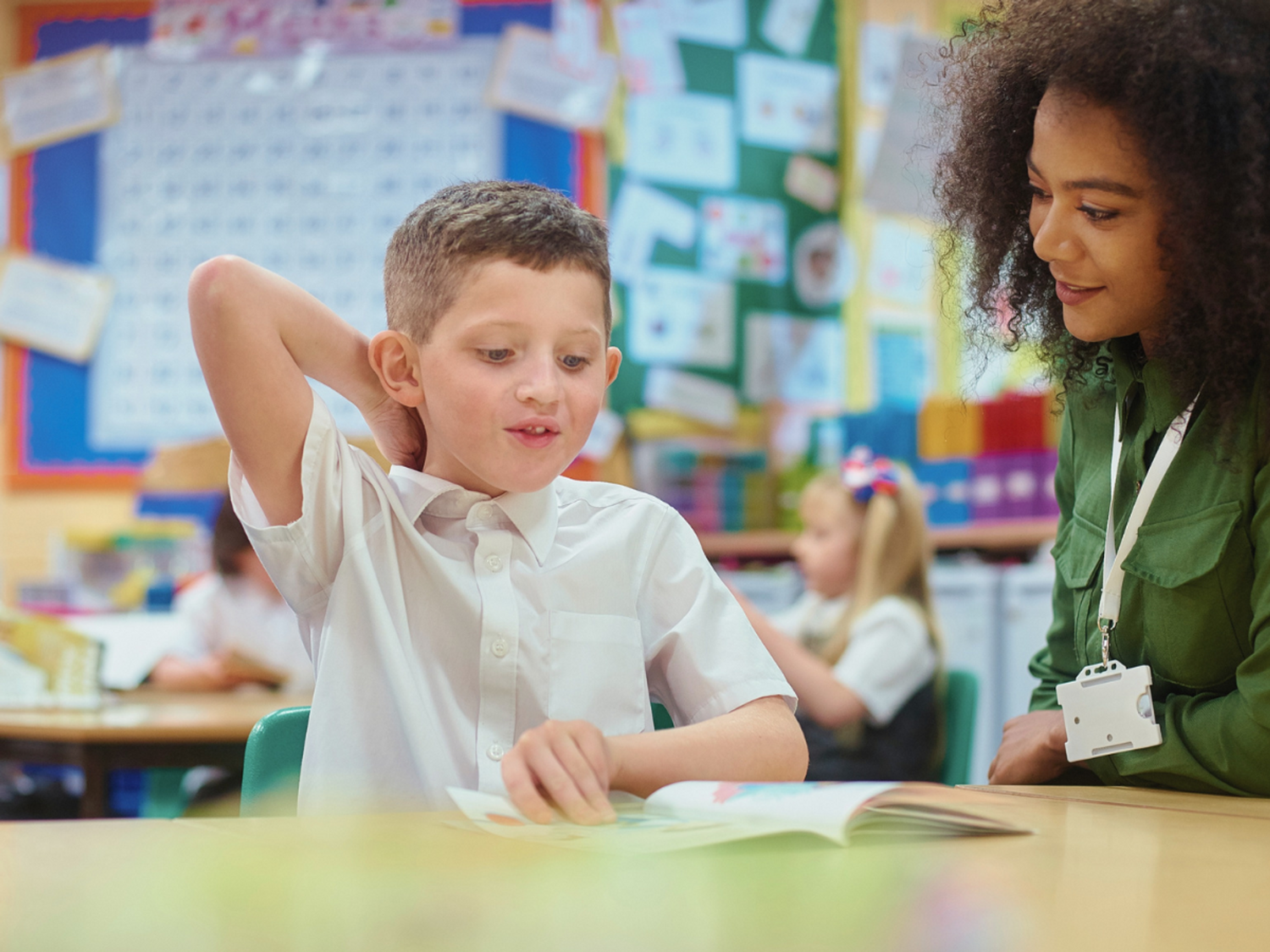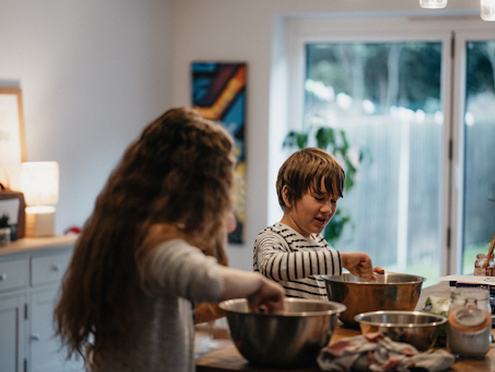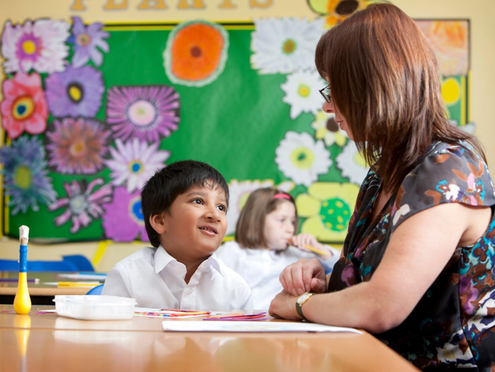They are usually the first elements of speech that infants learn - for example, Mum, Dad, juice. Without nouns, it would be difficult for sentences, stories and other forms of communication to exist.
In this blog, we explore the fundamentals of nouns and how to understand them. To learn more about the specific types of nouns, we delve deeper into the subcategories of nouns here.
What is a noun?
A noun is a naming word. Everything we can see and talk about is represented by a word which names it. That word we use to name it is known as a noun. There are many different types of nouns. People, places, animals, objects, qualities, measures, actions, substances - these can all be represented by different nouns.
A few examples:
- Names for people: Jack, soldier, cousin
- Names for animals: aardvark, lion, zebra
- Names for places: house, Paris, shelter
- Names for objects: chair, computer, hammer
- Names for qualities: faith, happiness, beauty
- Names for measures: month, inch, pound
- Names for actions: sewing, cooking, listening
- Names for substances: water, nitrogen, air
Common challenges learners may encounter learning nouns
The noun family is quite large, and it can be tricky for learners to get to grips with so many different types of nouns. For a more in-depth list of each type of noun and some fun activity ideas for how to teach them, check out our article on types of nouns.
Irregular plural nouns
A plural noun is a noun that refers to more than one of something. Regular nouns become plural by adding an -s at the end, for example:
- Dog -> dogs
- Table -> tables
- Spot -> spots
Irregular plural nouns however, may prove a little more challenging to master.
There are many different types of irregular plural nouns, each with their own patterns and rules that must simply be memorised by learners - and even some of these ‘patterns’ have exceptions to their own rules!
Below, we have outlined some irregular plural nouns and their endings.
1. If the singular noun ends in -s, -ss, -sh, -ch, -x, -z , then add -es to make it plural.
For example:
- bus -> buses
- miss -> misses
- marsh -> marshes
- church -> churches
- box -> boxes
- blitz -> blitzes
2. If the noun ends with -f or -fe, then the -f is substituted for -v before adding -s or -es.
For example:
- Wolf -> wolves
- Wife -> wives
Frustratingly, not all singular nouns ending in -f or -fe become irregular plural nouns - for example:
- Roof -> roofs
- Safe -> safes (the noun, not the adjective)
- Belief -> beliefs (the noun, not the verb)
- Chef -> chefs
3. If the singular noun ends in -y and the letter preceding the -y is a consonant, change the ending to -ies to make the noun plural.
For example:
- City -> cities
- Puppy -> puppies
- Lady -> ladies
4. If the singular noun ends in -o, then add -es to make the noun plural.
For example:
- Tomato -> tomatoes
- Potato -> potatoes
Some exceptions to this rule include:
- Photos
- Halos
- Pianos
To make up for all those annoying grammar exceptions, volcano can be written as volcanos or volcanoes - you can't go wrong! Gee, thanks, English.
5. If the singular noun ends in -us, then the plural often drops the -us and becomes -i.
For example:
- Cactus -> cacti
- Focus -> foci
- Octopus -> octopi
6. If the singular noun ends in -is, then the plural noun ending becomes -es.
For example:
- Analysis -> analyses
- Ellipsis -> ellipses
7. Some singular nouns stay the same when they become pluralised.
For example:
- Deer -> deer
- Sheep -> sheep
- Species -> species
- Fish -> fish (or sometimes fishes... thanks again, English)
8. We have singular nouns that follow no pattern at all when they become plural nouns. We simply must learn them.
For example:
- Goose -> geese
- Man -> men
- Woman -> women
- Tooth -> teeth
- Foot -> feet
(A loose pattern forming here could be that the vowels tend to become the e or ee vowel.)
9. There are those nouns that just change completely when they become plural, and again must be memorised.
For example:
- Mouse -> mice
- Person -> people
- Child -> children
When are capital letters needed in nouns?
A capital letter is used for all proper nouns. These include:
- Names of people (Sarah)
- Places (Washington)
- Planets (Jupiter)
- Days of the week (Tuesday)
- Titles of rank or relationship (like Uncle Desmond, or Lieutenant Jack)
- Months of the year (May)
- Holidays (Halloween or Christmas)
- Departments (Finance or Marketing)
- Clubs (Derby County Football Club)
- Companies (Bedrock Learning)
- Institutions (the Education Endowment Foundation)
- Bridges (Golden Gate Bridge)
- Monuments (Big Ben, which is technically a name)
- Parks (Saint James' Park, which is also technically a name)
- Ships (the Titanic)
- Hotels (Grand Budapest Hotel)
- Streets (Abbey Road)
- Historical events (Waterloo)
- Documents (the Magna Carta)
- Titles of books, songs and bands (War and Peace, or Pink Floyd, or Lean On Me)
Examples:
- The next lake the tour group visited was Lake Michigan.
- The word lake is a common noun, as it is the name of the geographical feature. Lake Michigan gets capitalised as it is a proper noun - it is the name of a specific lake.
- It was a thoroughly enjoyable day, and I hoped to visit here again on Anzac Day next year.
- The word day is a common noun, whereas Anzac Day is a specific holiday or day of celebration, so it is a proper noun.
Object or subject?
All sentences contain a subject and a verb. Some also contain an object. The subject is usually the thing or person who performs the verb action.
The object is the thing or person that is having the action ‘done’ to it but does not carry it out.
For example:
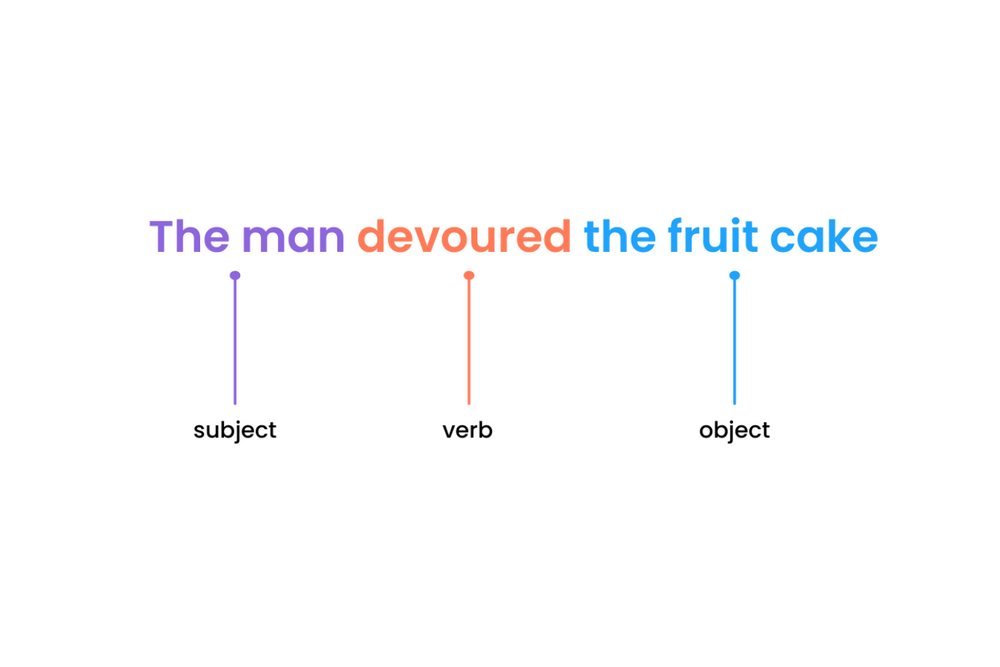
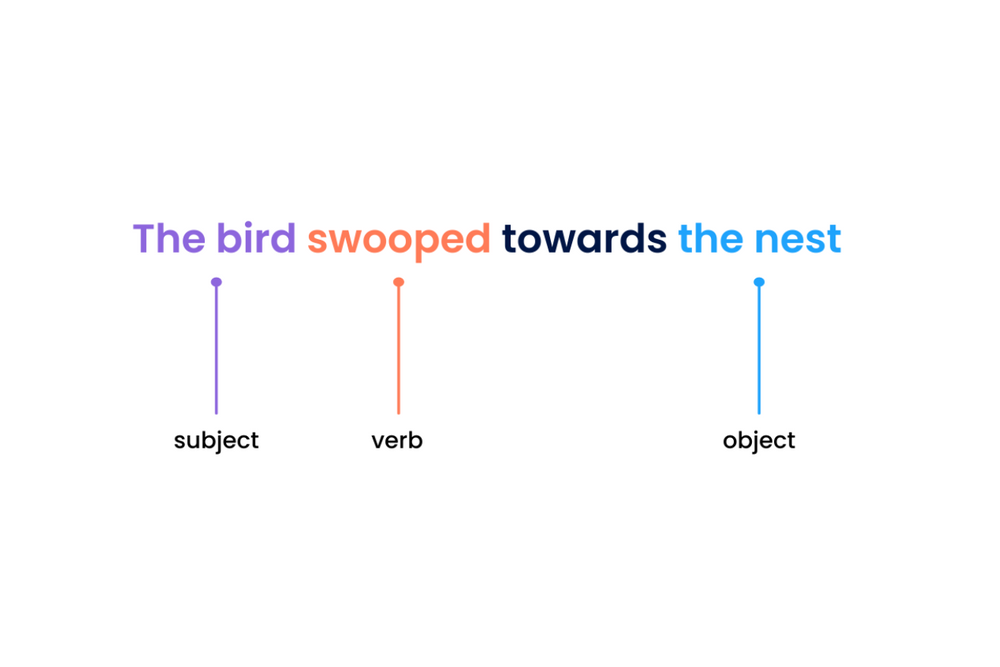
Which word is the noun?
In many cases, it’s easy to identify the noun in a sentence - maybe it’s capitalised because it’s a proper noun, maybe it has an amount or an adjective just before it, or maybe it’s a plural.
However, sometimes spotting the noun in the sentence can be a real challenge. This is especially common for noun phrases where the whole phrase is the noun:
Solar panels are an alternative source of power.
Or for collective nouns which, at first, may not seem like nouns at all:
A school of fish.
No gendered nouns
Around 38% of the world’s languages use gendered nouns. In languages, gender is a way of categorising nouns: nouns are classed as masculine, feminine, and in some languages, there is a neuter class too.
In English there is no distinction between masculine and feminine nouns - on the one hand, this simplifies the way we teach nouns in English, but on the other hand, it might be an area to focus on with EAL learners of certain languages to avoid potential misconceptions.
Noun or pronoun?
While a noun identifies a person, place or thing, a pronoun replaces a noun. Pronouns are used for brevity. A sentence would become quite tedious if the noun were to be repeated over and over.
One of the best things about this pen is that you can write anything you like with it.
In this example ‘it’ is the pronoun. It replaces and refers to the noun ‘pen’.
There are several different categories of pronoun which include:
- Personal pronouns: I, you, he, she, we
- Demonstrative pronouns: this, those
- Indefinite pronouns: some, any, each
- Possessive pronouns: mine, yours, its, his
- Relative pronouns: which, who, that
- Reflexive pronouns: yourself, himself, themselves
Activities for teaching nouns
Free noun worksheet
In our downloadable PDF, you can finds a few activities to help learners practice and embed their knowledge about nouns.
So, there you have it. There is a whole world of nouns out there (literally!) for learners to get to know and become comfortable using in their speech and in their writing.
How Bedrock Learning’s core curriculum improves grammar
If you’re looking for a simple solution to get your whole class learning grammar in an interactive, engaging way, look no further than Bedrock’s grammar curriculum.
From the basics of nouns all the way to complex grammar skills, Bedrock's grammar curriculum uses videos, games, activities and written tasks to embed a deep mastery of grammar. Learners’ progress is tracked from an initial holistic assessment throughout their activities, giving teachers and parents data on how grammar skills improve.
Though grammar skills are crucial for literacy progress, finding ways to teach them that are consistent, accurate and engaging can be a challenge. Bedrock’s grammar curriculum solves this problem and is perfect for both in-class and home learning.

